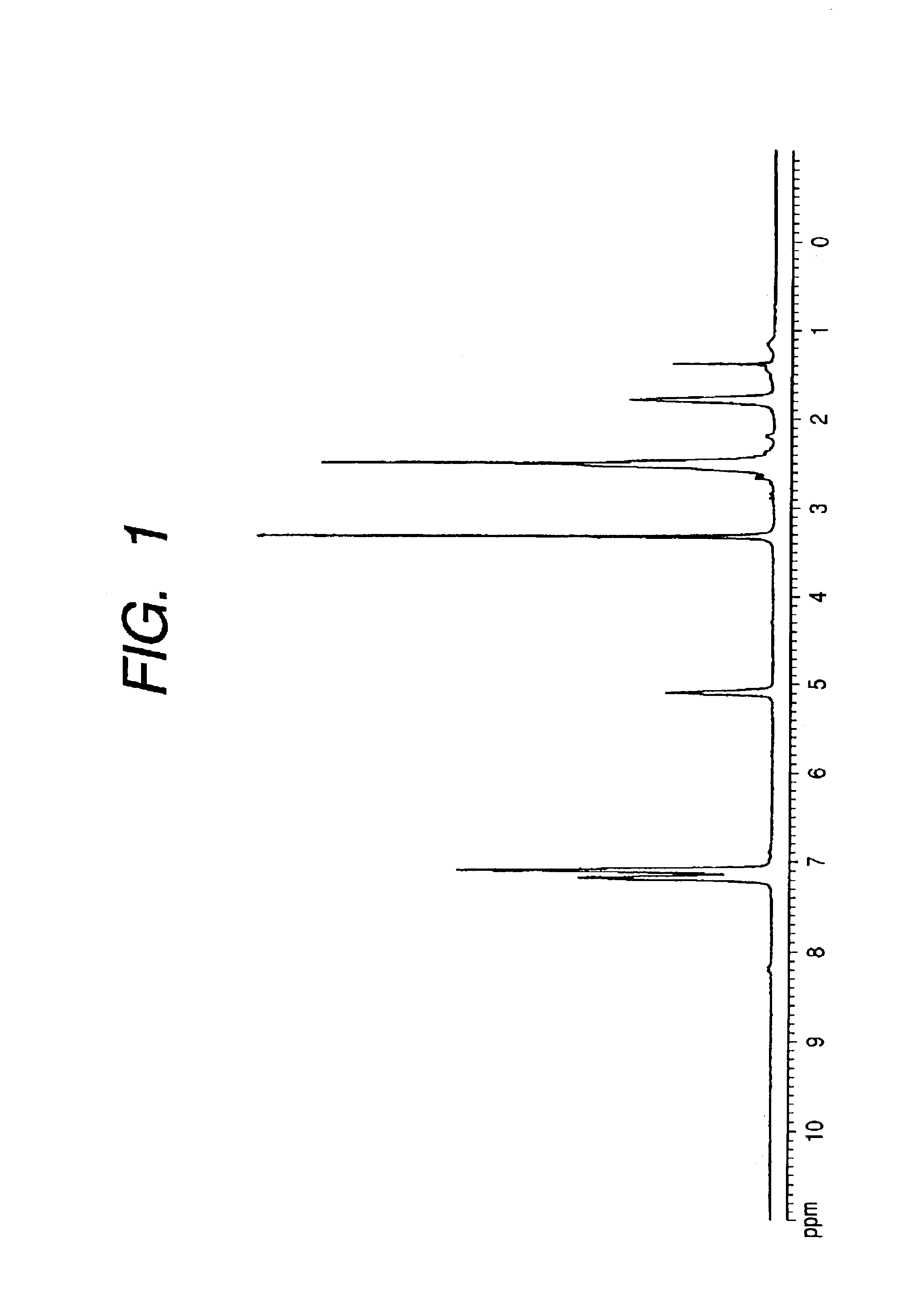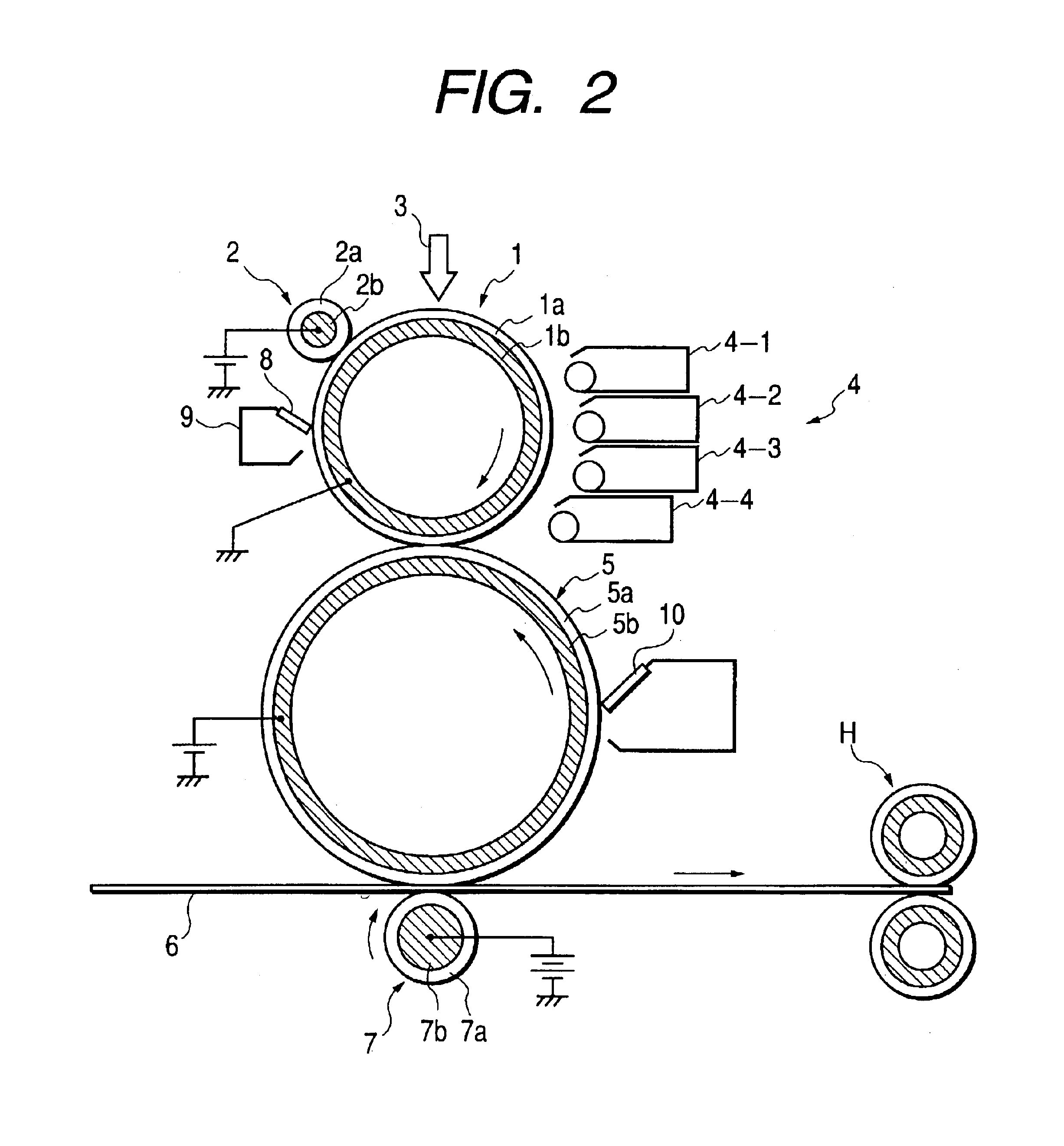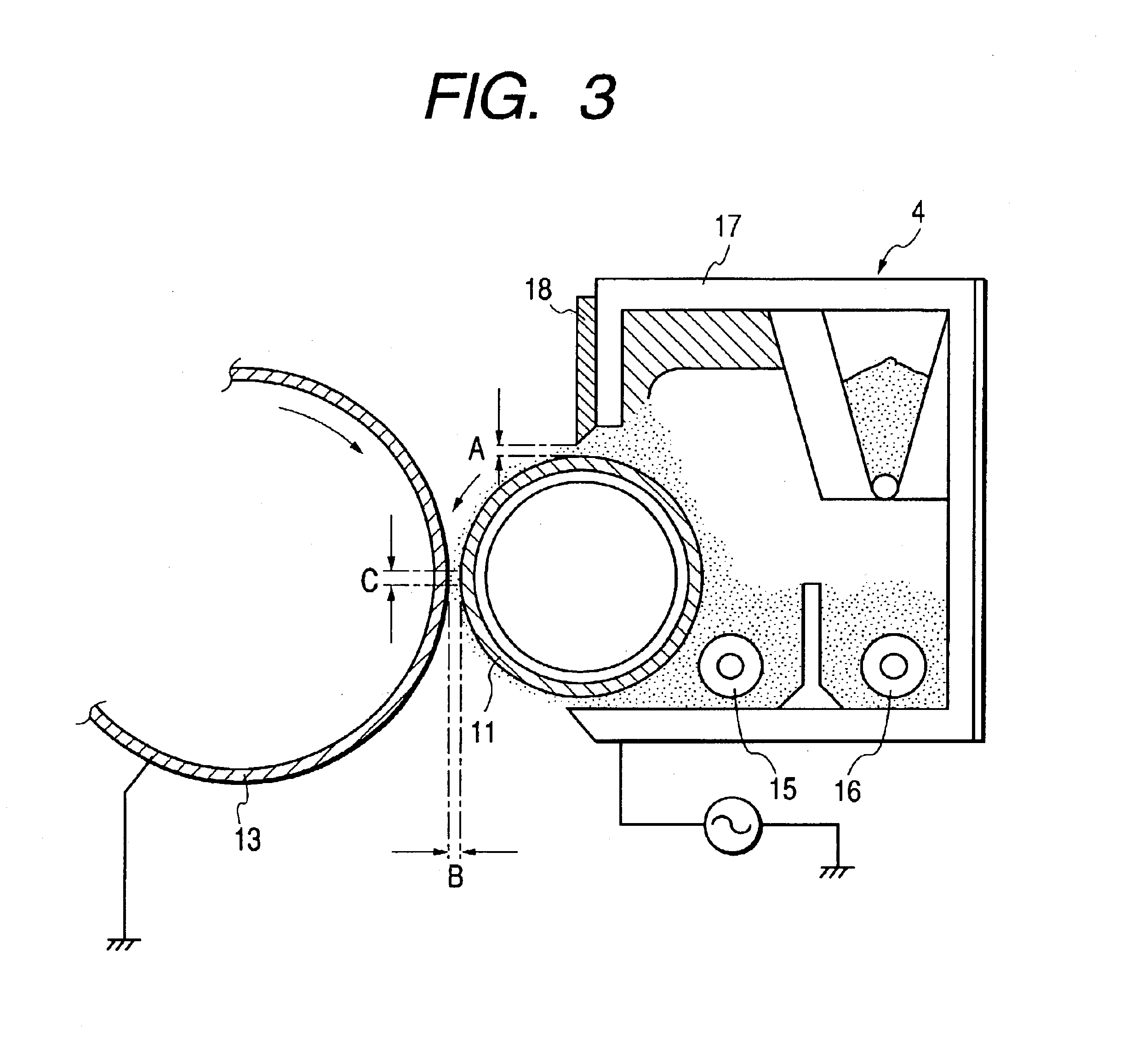Polyhydroxyalkanoate having amide group and sulfonic group, method of producing the same, charge controlling agent containing novel polyhydroxyalaknaote, toner binder, toner, and image forming apparatus using the toner
a polyhydroxyalkanoate and amide group technology, applied in the field of polyhydroxyalkanoate having amide group and sulfonic group, charge controlling agent containing novel polyhydroxyalkanoate, can solve the problems of inability to obtain high-quality images, inability to meet electrifiability and stability, and toners containing these substances as the charge controlling agent do not necessarily fully satisfy the quality characteristics required for toner, etc., to achieve excellen
- Summary
- Abstract
- Description
- Claims
- Application Information
AI Technical Summary
Benefits of technology
Problems solved by technology
Method used
Image
Examples
example 1
[0244]Method (1) of Producing Polyhydroxyalkanoate Containing Units Expressed by Chemical Formulas (25) and (26)
[0245]900 mg of polyhydroxyalkanoate (average molecular weight: Mn=36000, Mw=66000 (measured by gel permeation chromatography (GPC); Tosoh HLC-8220, column: Tosoh TSK-GEL SuperHM-H, solvent: chloroform, polystyrene equivalent)) containing 9.5 mol % in total of 3-hydroxy-8-bromooctanoic acid unit and 3-hydroxy-6-bromohexanoic acid unit, 89.1 mol % of 3-hydroxy-5-phenylvaleric acid and 1.4 mol % of other components (straight-chain 3-hydroxyalkanoic acid having 4 to 12 carbon atoms and straight-chain 3-hydroxyalka-5-enoic acid having 10 or 12 carbon atoms) was dissolved in 12 ml of N,N-dimethylformamide at a room temperature, and gas in the system was replaced with nitrogen. Then, while holding the system at a room temperature, 825 mg of sodium 2-(2′-mercaptoethyl)amide-2-methylpropanesulfonate dissolved in 18 ml of N,N-dimethylformamide was added, and 330 μl of diethylamine...
example 2
[0258]Method (2) of Producing Polyhydroxyalkanoate Containing Units Expressed by Chemical Formulas (25) and (26)
[0259]869 mg of polyhydroxyalkanoate (average molecular weight: Mn=30800, Mw=65200 measured by the gel permeation chromatography described in Example 1) containing 7.4 mol % in total of 3-hydroxy-8-bromooctanoic acid unit and 3-hydroxy-6-bromohexanoic acid, 87.1 mol % of 3-hydroxy-5-phenoxyvaleric acid and 5.5 mol % of other components (straight-chain 3-hydroxyalkanoic acid having 4 to 12 carbon atoms and straight-chain 3-hydroxyalka-5-enoic acid having 10 or 12 carbon atoms) was dissolved in 9 ml of N,N-dimethylformamide at a room temperature, and gas in the system was replaced with nitrogen. Then, while holding the system at a room temperature, 2080 mg of sodium 2-(2′-mercaptoethyl)amide-2-methylpropanesulfonate dissolved in 16 ml of N,N-dimethylformamide was added, and 206 μl of diethylamine was then added, and was stirred at a room temperature for 24 hours.
[0260]After ...
example 3
[0266]Method (1) of Producing Polyhydroxyalkanoate Containing Units Expressed by Chemical Formulas (29), (30) and (31)
[0267]449 mg of polyhydroxyalkanoate (average molecular weight: Mn=48000, Mw=111000 measured by the gel permeation chromatography described in Example 1) containing 7.1 mol % in total of 3-hydroxy-11-bromoundecanoic acid unit, 3-hydroxy-9-bromononanoic acid unit and 3-hydroxy-7-bromoheptanoic acid, 79.3 mol % of 3-hydroxy-5-phenoxyvaleric acid and 13.7 mol % of other components (straight-chain 3-hydroxyalkanoic acid having 4 to 12 carbon atoms and straight-chain 3-hydroxyalka-5-enoic acid having 10 or 12 carbon atoms) was dissolved in 6 ml of N,N-dimethylformamide at a room temperature, and gas in the system was replaced with nitrogen. Then, while holding the system at a room temperature, 265 mg of sodium 2-(2′-mercaptoethyl)amide-2-methylpropanesulfonate dissolved in 8 ml of N,N-dimethylformamide was added, and 106 μl of diethylamine was then added, and was stirred...
PUM
| Property | Measurement | Unit |
|---|---|---|
| Fraction | aaaaa | aaaaa |
| Fraction | aaaaa | aaaaa |
| Fraction | aaaaa | aaaaa |
Abstract
Description
Claims
Application Information
 Login to View More
Login to View More - R&D
- Intellectual Property
- Life Sciences
- Materials
- Tech Scout
- Unparalleled Data Quality
- Higher Quality Content
- 60% Fewer Hallucinations
Browse by: Latest US Patents, China's latest patents, Technical Efficacy Thesaurus, Application Domain, Technology Topic, Popular Technical Reports.
© 2025 PatSnap. All rights reserved.Legal|Privacy policy|Modern Slavery Act Transparency Statement|Sitemap|About US| Contact US: help@patsnap.com



